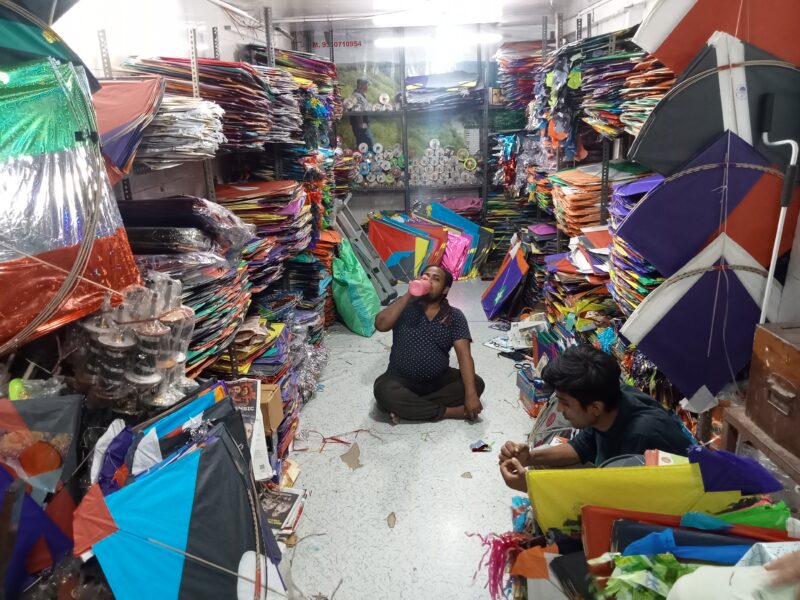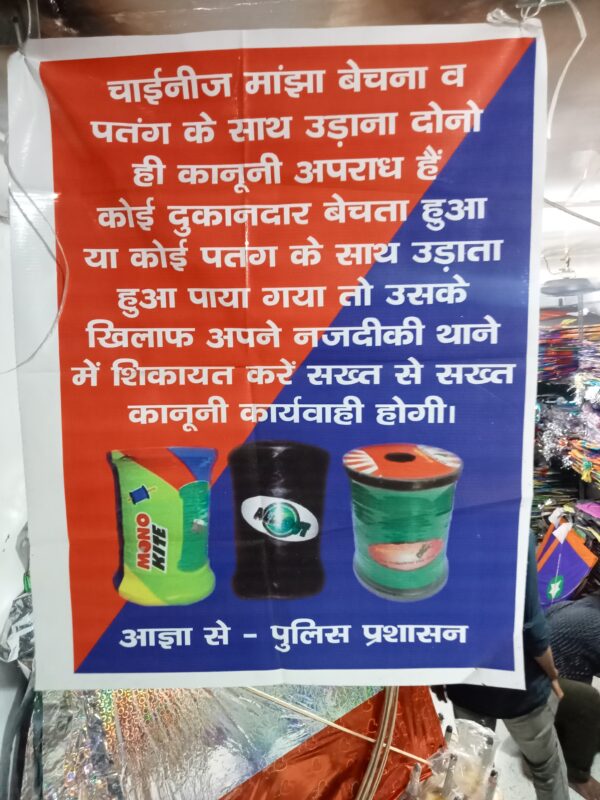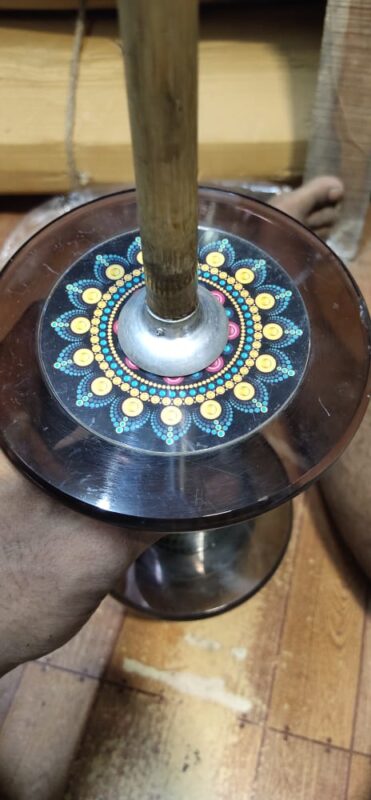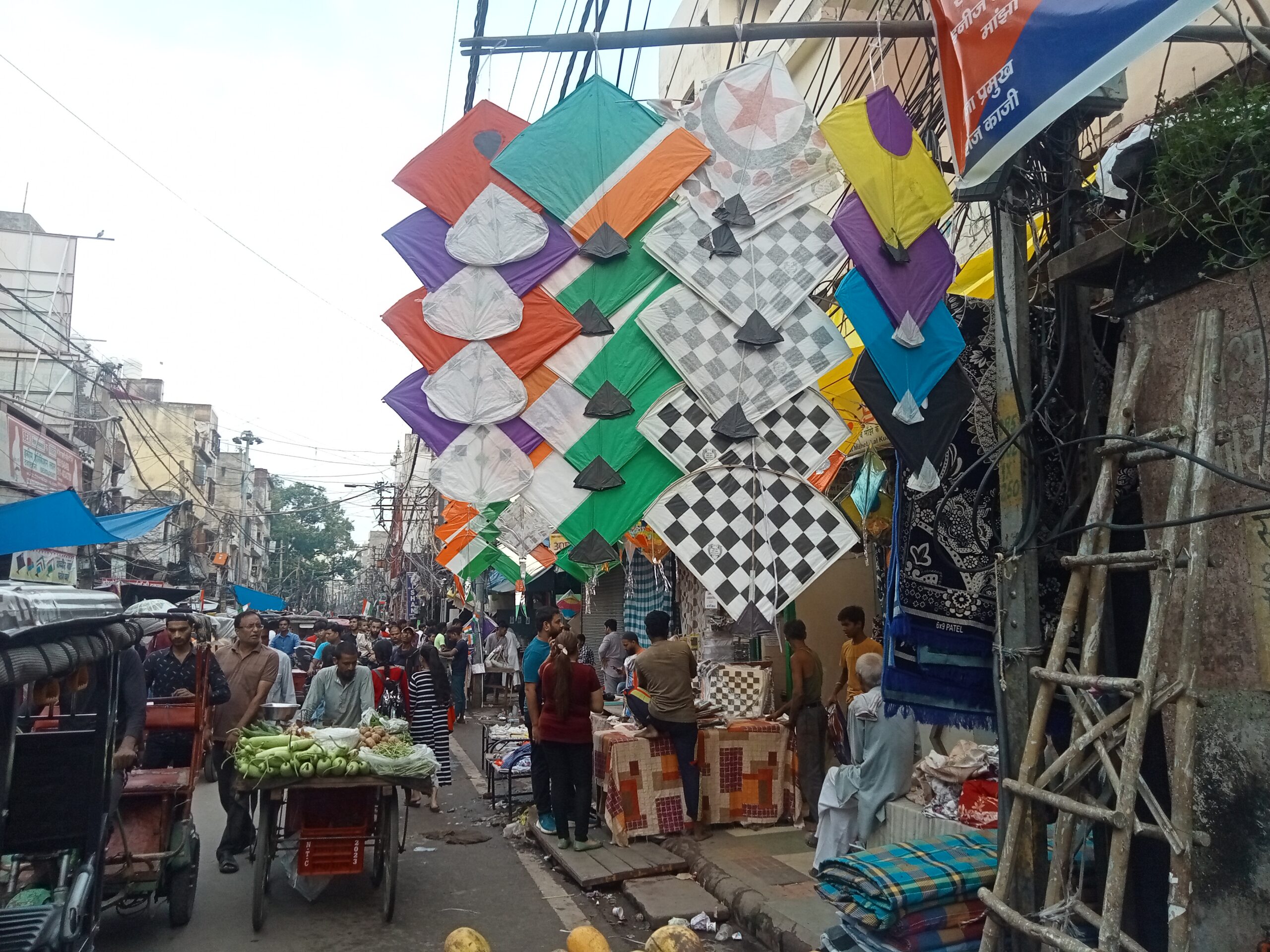A number of makeshift shops line the streets of Lal Quan in Old Delhi around Independence Day. In this market, famously called Patang Bazaar, the shopkeepers sell kites as big as bedsheets and as small as a palm.
There are varieties of kites: some have patterns of different shades, some in the colours of the national flag, while others have pictures of famous celebrities. This time, the celebrity trending is the late Punjabi singer Sidhu Moosewala, who was shot dead on 29 May this year.
“I come here only during the time of Independence Day”, says a shopkeeper, who put up a small shop for 4-5 days to earn a little extra. Every year, the kite-sellers from around the city set up their shops in the market due to booming demand as Delhi has a tradition of kite-flying in the month of August.
However, the business has not been so good this year. “We have been sitting idle here the entire month”, says Areeb, one of the traders. “I have a shop in Mathura and I come here every year this time. The sale is good every time, but this year it is nothing”, he adds.

Areeb joined the family business of selling kites 20 years ago and claims to never have witnessed so much loss. “We’ll end up spending money from our end”, he remarks.
Speaking on similar lines, Raja, another seller Patriot interacted with, says August used to be a busy month for him. “I have nothing to do this year, which is why I am talking to you. I remember only having dinner when it was business as usual”, he says.
Although the entire city participates in kite-flying in August, it is not a seasonal occupation for those who are actively involved in the traditional sport of Patangbaazi. 33-year-old Mohammad Azhar, an active member of one of the famous kite-flyer clubs in Delhi, says that every state has a committee that makes decisions regarding tournaments and festivals. Delhi has two such committees that supervise all activities of the community: one in Okhla and the other in Old Delhi.
“They decide the rules of the game, safety parameters and even the grounds where the game will be held”, Azhar says. Every tournament has a number of teams depending upon the level of the game. “A tournament has 16, 32, 64 or 128 teams; this is decided prior to the game”, he explains. In a national-level tournament, the usual number of teams is 64, comprising 32 teams from the organising state and 32 teams from other states.
Three ‘fighters’ are nominated to participate in the sport from each team. They are assigned a specific paala (spot) to fly the kites from – stepping out of which leads to disqualification. The size of the kite is usually 23.5 cm (tether) by 26.5-27 cm (anchor). Elaborate guidelines regarding the string are decided prior to the game – which also includes strict restrictions on Chinese manjha (which the government has banned) and other harmful fibres.

Every player competes with the rival in a pej (a term used for a battle wherein players cut each other’s kite strings). One game has nine pej in total and usually two chances are given to the player to avoid the pej with the opponent.
Ustad Ghayas, 80, secretary of the Kite Flying Association and a national-level kite fighter, elaborates on the rule. “Suppose if you are avoiding to come fight with me to cut my string, you are given only two chances. If you avoid the third time, you are disqualified”, he explains.
Ghayas has played in many national tournaments and has also been invited in international kite festivals. He emphasises that the sport has garnered a lot of criticism and accusations since the arrival of harmful products, especially Chinese manjha. “It is a game of love and comradeship. Now, a lot of players have stopped the game because of its bad reputation after the Chinese manjha issue”, he says.
He believes that although the game might look like a physical activity to many, it involves a lot of mental labour and tactics. “If you are a professional, you have to understand its many techniques. When you fail to understand what is in your opponent’s mind, you fail to be a good player”, he says. He adds that there is no reaction time in a professional kite-flying game and it usually lasts for two minutes. “Good fighters cut your strings in the blink of an eye”, he remarks.
Ghayas has been actively involved in the current ban on Chinese manjha. What worries him are the threat it poses to human and animal lives. He shows Patriot a number of newspaper clips and legal judgements in his mobile that he is collecting to create awareness in the community. He waxes nostalgic about the days when the sport of Patangabaazi forged communal harmony, brotherhood and togetherness.
“Ours is a culture of togetherness and Patangbaazi – which everyone observed on their terraces – played an important role in it. Now everyone looks at it with suspicion and I want to contribute to its revival as a harmless sport”, he says.
He adds that although the government is being vigilant about the usage of Chinese manjha in the market, it is not doing enough to keep a watch on its sale and purchase. “A lot of politics is involved, this is the reason the government is not doing enough”, he alleges.
Speaking on the many kinds of events, he says that although there are national and international kite festivals, the subcontinent practises the sport very differently. “We do not treat the sport just as a demonstration of a variety of kites. We have fighters who are remarkable kite-runners”, he says. People in the country can take their pick of festivals and tournaments.
During the pandemic, new businesses around kites flourished in the city. “When people had nothing to do, they flew kites”, says 30-year-old Mohammad Aqil, a professional who works at airlines and runs multiple businesses on the side. He, along with a kite fighter Shariq, came up with the idea of fancy charkhi (reels for strings). “We introduced designer charkhis in the city”, says Shariq as he shows multiple sketches for the designs.

Shariq observes the sport the entire year except in the month of Ramadan. He says that it is the only thing that gives him satisfaction and he has also participated in multiple tournaments. Being an active member of one of the famous kite clubs of Delhi, he often ends his day chatting with other kite-runners in the area. “It also gives you a sense of community”, he says.
His business started small and boomed over time. Presently, they receive orders globally and have exported the reels to Australia, France and UAE. “People would usually use charkhi made of wood and we came up with something impressive to look at. That’s why it attracted a lot of people”, Aqil explains the reason behind the success.
Following a number of incidents around Chinese manjha, Patriot interacted with the shopkeepers to know about its demand and availability. All of them said that they only sell swadeshi (domestic) products. A few of them have also put up a poster regarding its ban.
“Don’t ask me about these dangerous things”, says Mohammad Anas, who has been a kite-seller for 30 years. Even as a customer asks for manjha, Delhi Police announces on a megaphone the legal as well as deadly repercussions of its use on the streets nearby.
For more stories that cover the ongoings of Delhi NCR, follow us on:
Instagram: instagram.com/thepatriot_in/
Twitter: twitter.com/Patriot_Delhi
Facebook: facebook.com/Thepatriotnewsindia





